
by Diva Amon and Camilla Tham, Natural History Museum in London, UK
April 30, 2018
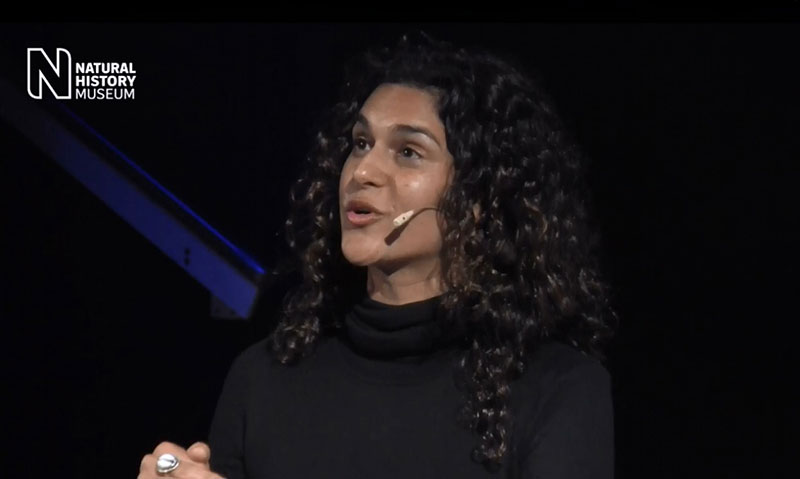
Diva Amon discusses her experiences using telepresence technology as a scientist with NOAA Ship Okeanos Explorer during a presentation at the Attenborough Studio in London’s Natural History Museum. Image courtesy of the Natural History Museum. Download larger version (jpg, 225 KB).
Most of us know that NOAA Ship Okeanos Explorer is a very special ship for numerous reasons: it focuses on exploration of the deep unknown, it has remotely operated vehicles (ROVs) that are able to capture stunning imagery, and it has a great team both onshore and offshore. But the most special feature of the Okeanos Explorer is its ability to beam the deep sea to pretty much anywhere in the world with an Internet connection via telepresence. And on Friday, 27 April 2018, we had a great example of telepresence at its finest.
As I am currently based at the Natural History Museum (NHM) in London, United Kingdom, it was a no-brainer that we had to use the incredible science communication skills of the public engagement team and the resources of the NHM. Not only is the NHM a world-class visitor attraction, but it is also a leading science research center. The NHM attracts more than 4.5 million visitors annually and houses more than 80 million scientific specimens spanning across billions of years. This is a perfect combination for grade-A science communication!
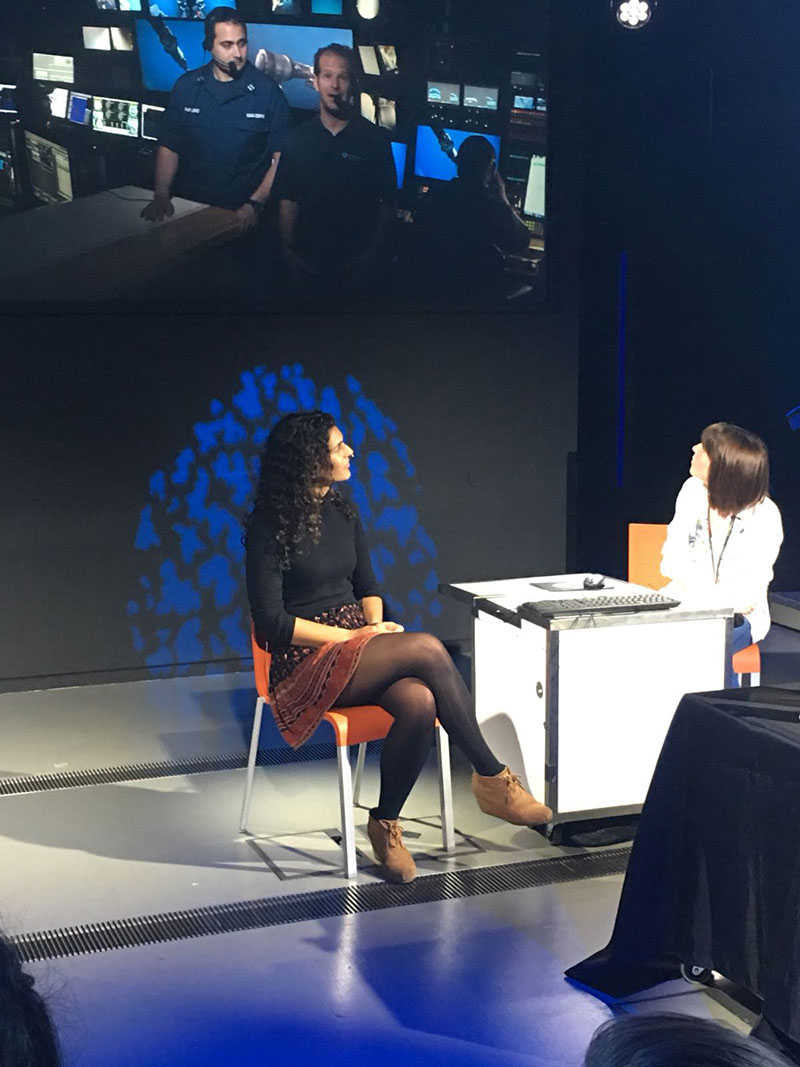
Alison Shean and Diva Amon chatting with LT Nikolai Pawlenko and Daniel Wagner on board on NOAA Ship Okeanos Explorer. Image courtesy of the Natural History Museum. Download larger version (jpg, 580 KB).
This was a particularly special opportunity to conduct an Okeanos Explorer live interaction, as it was the first all the way across the Atlantic! We started with an introduction to the deep sea and the Okeanos Explorer by Alison Shean (Nature Live Host) and myself. Thankfully, after a few technical glitches (no one said it was easy!), live video of Expedition Coordinator, LT Nikolai Pawlenko, and Biology Lead, Daniel Wagner, was beamed 4,600 miles from the Gulf of Mexico into the studio in London (much like the Gulf Stream!) for a lively deep-sea discussion.
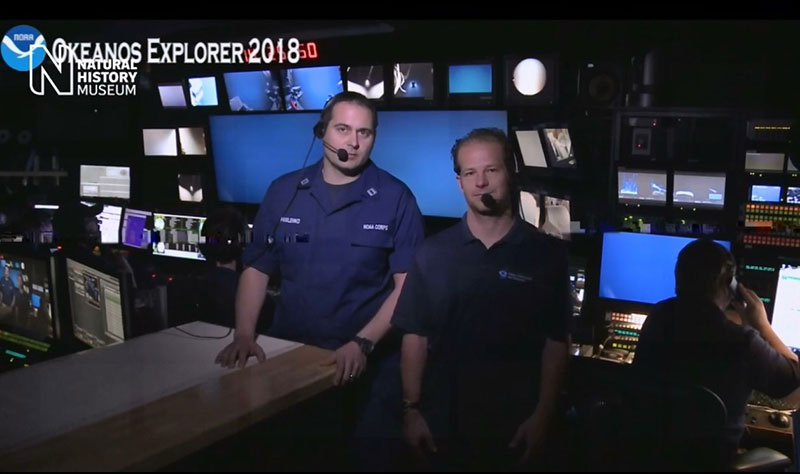
LT Nikolai Pawlenko and Daniel Wagner speaking live to the Attenborough Studio in London. Image courtesy of the Natural History Museum. Download larger version (jpg, 337 KB).
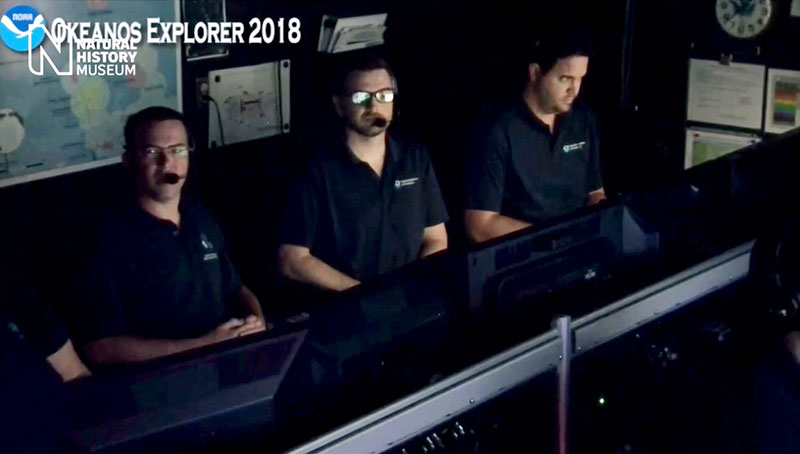
Karl McLetchie, Adam Skarke, and Michael White speaking live from Mission Control on Okeanos Explorer to the Attenborough Studio in London. Image courtesy of the Natural History Museum. Download map (jpg, 369 KB).
The audience was treated to introductions to a few other members of the science team, including Geology Lead, Adam Skarke; Mapping Lead, Michael White; and ROV Dive Supervisor, Karl McLetchie, as well as some of the highlight videos and images from both the 2017 and current Gulf of Mexico expedition. The audience was fascinated by these extraordinary discoveries and had many questions for the onboard team. After the live interaction with the ship had ended, audience members were able to come down to the floor to chat to Alison and me and to get closer looks at some deep-sea specimens (Lamellibrachia sp. and Escarpia sp. tubeworms and a purple holothurian) that were specially pulled out of the NHM collections for the show.
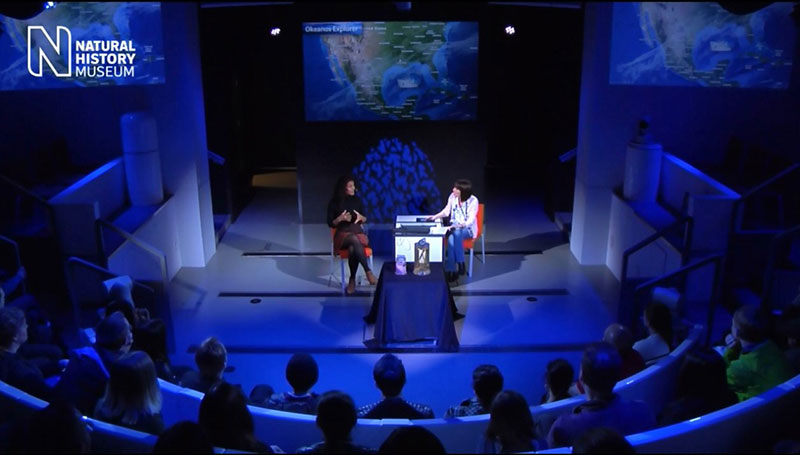
The Attenborough Studio mid-show. Image courtesy of the Natural History Museum. Download larger version (jpg, 393 KB).
We at the NHM do hope that this is the first of many interactions with the Okeanos Explorer, especially given NOAA’s upcoming multi-year, multi-national collaborative field campaign focused on advancing knowledge of the North Atlantic – the Atlantic Seafloor Partnership for Integrated Research and Exploration (ASPIRE). The exploration of deep-sea habitats so close to the United Kingdom is sure to thrill many both here and away!